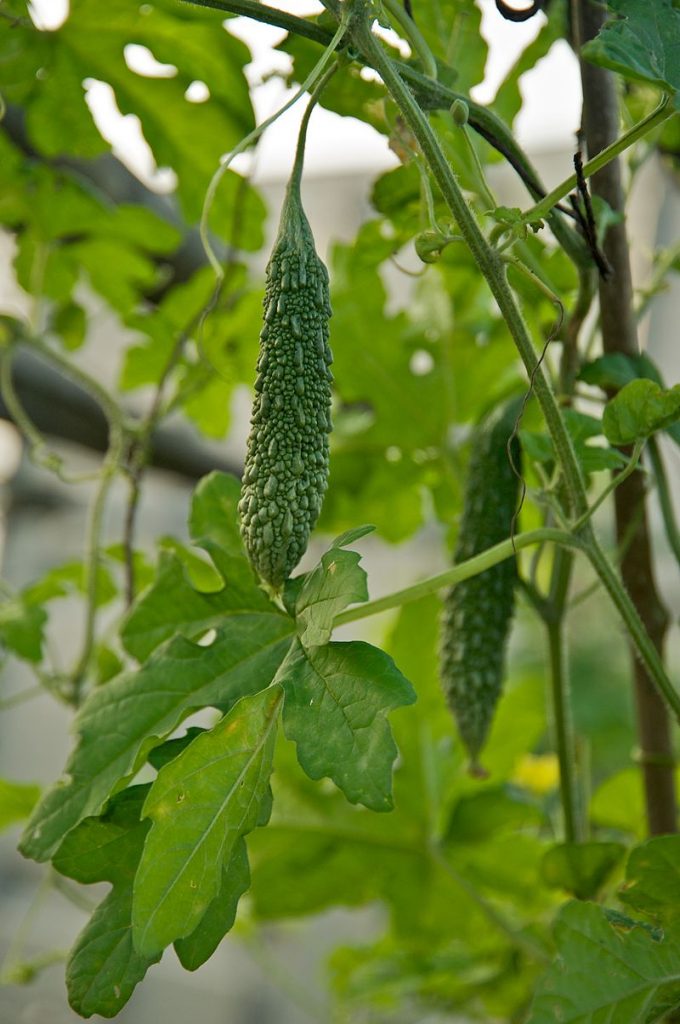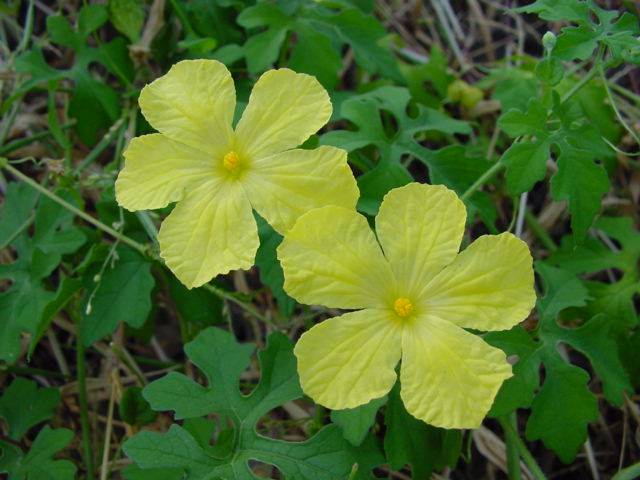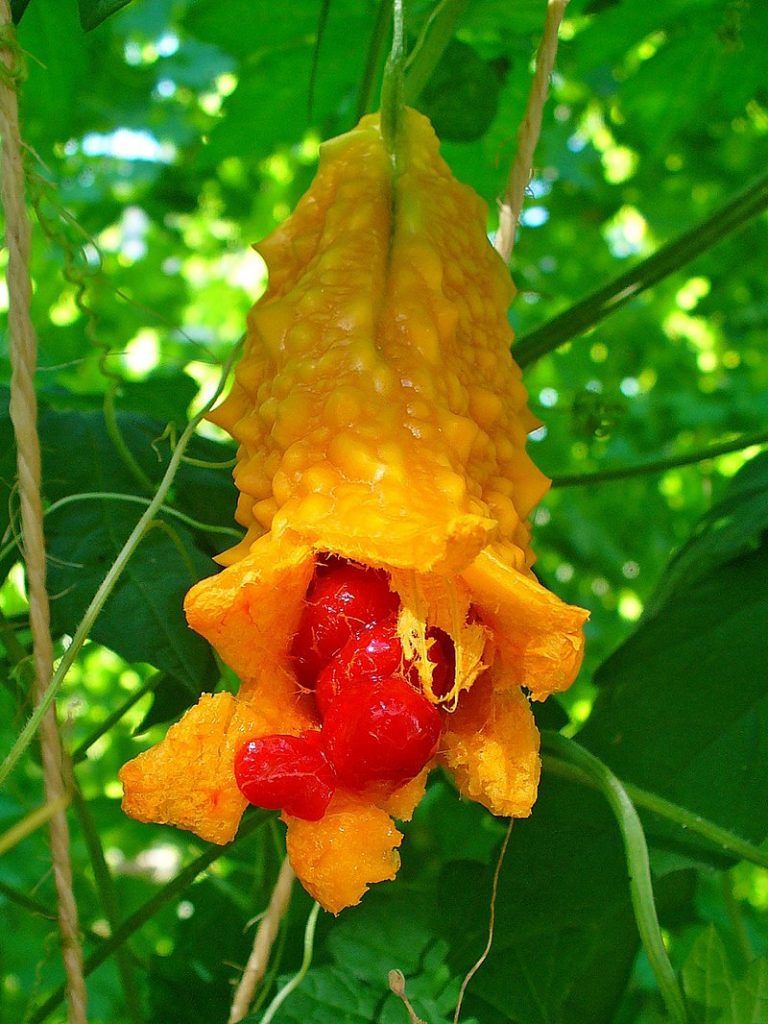
Known by many names including bitter apple, bitter gourd, bitter squash, and balsam-pear, this herbaceous tropical to subtropical, annual vine is native to Africa and Asia and is widely grown there for its edible fruit. It is a member of the gourd family, Cucurbitaceae, that also includes cucumber, squash, and cantaloupe. The vine grows from a central taproot and may be up to 20′ long. The stem bears tendrils and simple, alternate leaves that are 1.6-4.7″ across, have toothed margins, and are deeply palmately cut to have 3-7 lobes. The leaves give off an unpleasant scent when crushed. In summer, male and female flowers appear on long stalks in the upper leaf axils of the same plant. They are yellow, 1″ wide, and have 5 oval spreading petals. The male flowers have a slender basal swelling that is continuous with the base of the sepal tube, while the female flowers have a warty swelling well below the base of the sepal tube. The male flowers appear first and more abundantly, in a ratio of about 20:1. The green cylindrical fruits that follow are 4-8″ long, covered with warts and longitudinal ridges. They ripen to yellow to orange and split open into 3 curling parts to expose yellow pulp and flattened woody seeds with bright red arils . Although the ripe fruit is ornamentally attractive it has an unpleasant odor. Young fruit and leafy shoot tips are popular in Asian cuisine but the mature fruits and seeds are toxic. In addition, bitter melon has been used in Asian and African herbal medicine to treat a variety of ailments including stomach problems, ulcers, diabetes, constipation, gout, rheumatism, and respiratory and skin diseases. The genus name, Momordica, comes from the Latin word mordere meaning to bite. The specific epithet, charantia, is of uncertain origin and meaning. Photo Credit Fred Hsu Wikipedia

Type: Herbaceous annual vine
Bloom: Yellow, 1″ wide male and female flowers on the same plant in summer
Size: 12-20′ H x 3-6′ W
Light: Full sun
Soil: Fertile, consistently moist, well-drained
Hardiness: Not applicable
Care: Start seeds indoors in peat pots about 4 weeks before the soil is warm; provide a structure on which the vine can grow

Pests and Diseases: None of significance
Propagation: Seed; plants do not transplant well
Companion Plants: Not applicable
Outstanding Selections: Varieties and cultivars are available in other countries that vary most significantly in shape and bitterness of the fruit
Photo Credits: B. Navez Wikipedia, H Zell Wikipedia, respectively